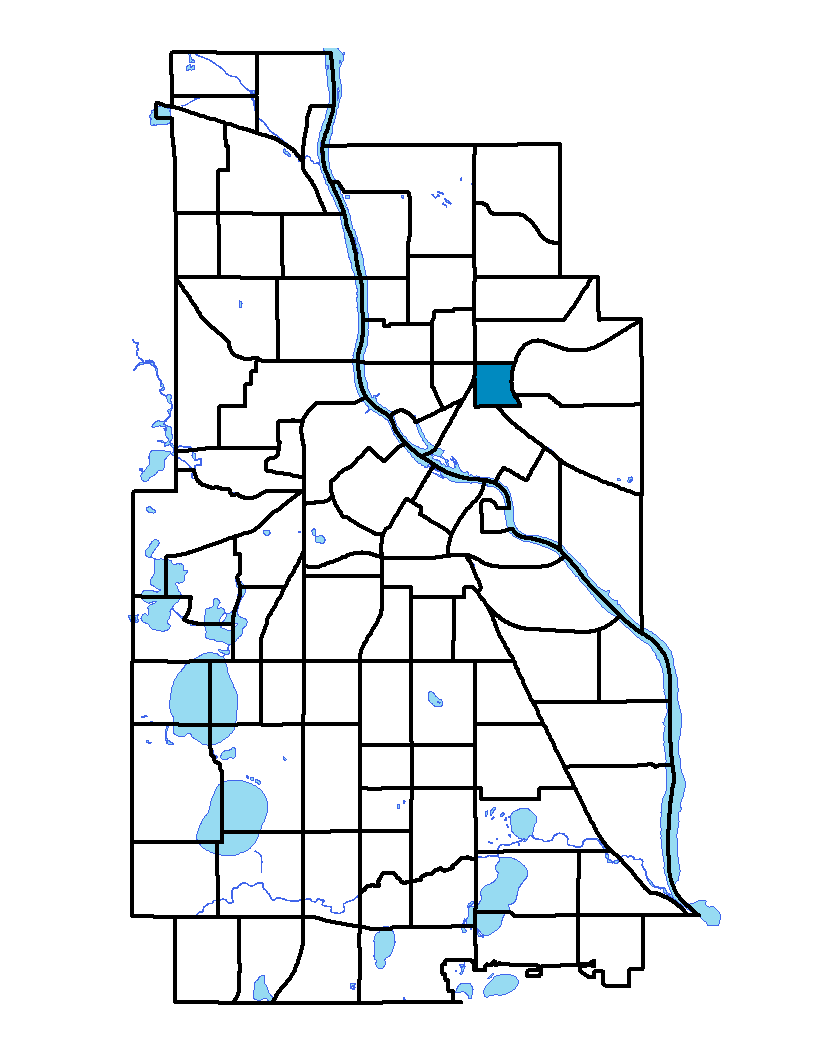Beltrami neighborhood is in the Northeast community of Minneapolis. It is bound on the north by Broadway Street NE, on the east by Interstate 35W, on the south by Hennepin Avenue East and on the west by Central Avenue NE and Harrison Street NE. Located within the neighborhood is Beltrami Park, which has a playground, bocci courts, soccer and softball fields, tennis courts, a sand volleyball court and a basketball court. Beltrami neighborhood and park are named after Giacomo Constantino Beltrami, an early 19th century Italian jurist, scholar and explorer. As with other neighborhoods in northeast Minneapolis, many artists have set up studios in Beltrami. Large tracts of industrial land cover the southwestern part of the neighborhood, while the remaining land is dedicated to single-family dwellings interspersed with low-rise multifamily buildings.
To learn more about the neighborhood association visit: www.discoverbeltrami.org
Indicator Details
|
Indicators |
Primary Domain | Indicator Value | Rank | Tier |
|---|---|---|---|---|
| Walkability | Neighborhood Characteristics | 62 | 44 | Middle |
| Voter Participation | Social Cohesion | 24.5% | 47 | Middle |
| Violent Crime | Health Systems and Public Safety | 52.9 | 50 | Middle |
| Vacancy Rates | Housing | 19.3% | 83 | Bottom |
| Tree Cover | Natural Areas | 29.3% | 35 | Middle |
| Travel Time to Work | Employment Opportunities | 23.4 minutes | 63 | Bottom |
| Transit Accessibility | Transportation | 415.3 | 26 | Top |
| Toxic Releases from Facilities | Environmental Hazards | 100.0% | 84 | Bottom |
| School Readiness Scores | Educational Opportunities | -% | - | Data N/A |
| School Proximity to Traffic | Environmental Hazards | -% | - | Data N/A |
| Residential Proximity to Traffic | Environmental Hazards | 21.7% | 57 | Middle |
| Residential Mobility | Social Cohesion | 68.0% | 73 | Bottom |
| Reading Proficiency | Educational Opportunities | -% | - | Data N/A |
| Public Assisted Households | Employment Opportunities | 27.8% | 55 | Middle |
| Proximity to Superfund Sites | Environmental Hazards | 39.1% | 56 | Middle |
| Proximity to Brownfield Sites | Environmental Hazards | 4.3% | 41 | Middle |
| Preventable Hospitalizations | Health Systems and Public Safety | 3 | 50 | Middle |
| Preschool Enrollment | Educational Opportunities | -% | - | Data N/A |
| Pedestrian Connectivity | Transportation | 152.7 | 26 | Top |
| Offsite Alcohol Outlets | Neighborhood Characteristics | 1 | 6 | Top |
| Motor Vehicle Collisions | Health Systems and Public Safety | 7.5 | 48 | Middle |
| Low Birth Weight | Health Systems and Public Safety | 5.8% | 29 | Top |
| Long-Term Unemployment | Employment Opportunities | 9.4% | 77 | Bottom |
| Local Business Vitality | Economic Health | 47.4% | 63 | Bottom |
| Household Transportation Costs | Transportation | 16.8% | 42 | Middle |
| High School Graduation Rate | Educational Opportunities | -% | - | Data N/A |
| Food Desert | Neighborhood Characteristics | 100.0% | 31 | Middle |
| Excessive Housing Cost Burden | Housing | 44.3% | 72 | Bottom |
| Employment Rate | Employment Opportunities | 69.1% | 41 | Middle |
| Commute Mode Share | Transportation | 38.2% | 21 | Top |
| Chronic School Absence | Health Systems and Public Safety | -% | - | Data N/A |
| Business Retention | Economic Health | 6.2% | 10 | Top |
| Blood Lead Levels in Children | Housing | 2.4% | 26 | Top |
| Age of Housing | Housing | 77.0% | 23 | Top |
| Adult Educational Attainment | Educational Opportunities | 84.7% | 55 | Middle |
| Access to Parks and Open Space | Natural Areas | 5.6% | 43 | Middle |
| Access to Mainstream Financial Services | Economic Health | 35.4% | 67 | Bottom |

